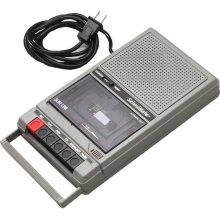It is important to understand that use of equalizers (EQ) to enhance audio. This article talks about what EQ can and can’t do. It focuses more on live audio (the site deals with a lot of church performance issues), but the concepts apply to recording as well.
Read the full article here:
EQ As The Miracle Solution? What Equalization Can – And Cannot – Do
ProAudio.com Launches "12K Giveaway" Sweepstakes
Home Recording Equipment – Accordions & Didgeridoos: Microphone Techniques… The Old Soundman: Lawyers & Open Mics Church Sound Files: The Nature Of Soundcheck…
Read the full article here:
ProAudio.com Launches “12K Giveaway” Sweepstakes
Less Can Be More? Ways For Musicians & Engineers To Work Together In Harmony
Music Recording – The past 50 years have witnessed the birth of rock, punk, ska, hip hop, electronica, emo and so many other genres of music, that one has to be either obsessive compulsive (or in college) to distinguish between them all. During this same period, there have been countless refinements and enhancements in the technology, that allow us to record, play and appreciate music.
Read the full article here:
Less Can Be More? Ways For Musicians & Engineers To Work Together In Harmony
Audio Recording Equipment I Cut My Teeth On
 Over on the Home Recording Forum, someone started a post entitled: All You Old Farts – Born Before 1967. Now I don’t know what the significance of 1967 is, but by that definition (born in 1964), I guess I’m an old fart (even though I LOOK fabulous…shyaa). The idea was to get some idea what audio recording equipment we used way back when.
Over on the Home Recording Forum, someone started a post entitled: All You Old Farts – Born Before 1967. Now I don’t know what the significance of 1967 is, but by that definition (born in 1964), I guess I’m an old fart (even though I LOOK fabulous…shyaa). The idea was to get some idea what audio recording equipment we used way back when.
Anyway, the question was:
Come on tell us what gear were you weaned on? Inspired by the “how do you know so much post”
Here is my answer, for whatever educational value it is worth:
Wow, I’m officially an old fart? Do I get a card or something?
I started out with an old cassette recorder similar to the Hamilton Electronics HA-802 Cassette Player and Recorder. I would play a guitar part and sing along (or play another guitar part along for those cool Jim Croce songs) while recording into my brother’s boom box. I used the little built-in condenser mic for both. Then I would play those 2 parts back from the boom box onto my cassette recorder as many times as I needed instruments and harmonies. This hiss was incredible.
Eventually I graduated to doing the same thing but with better machines, like the ones in entertainment centers, and used a PA mixer in there somewhere. Finally, in 1988, I bought a Tascam Porta 5 4-track cassette recorder. That was a life-changer. One more 4-track cassette machine and a Sony DAT machine later, I got my first digital machine, the Roland VS-840. The next year I bought the VS-880 off e-bay for the amazing deal of $1200. That was my primary throughout the early 2000s, when I added outboard gear, monitor speakers (starting with Alesis Monitor Ones…now using the Event TR-8s), separate mic preamp (the Peavy VMP 2 Tube mic preamp, which I still use), compressor, EQ, etc. Then I made the jump to doing everything in the computer right around 2003, using Adobe Audition. Eventually I added Reaper as my DAW and continue to use AA as my editor.
That’s about it in a nutshell from this old fart.
Cheers!
Ken
IK Multimedia introduces iKlip™ MINI
From IK Multimedia, the makers of such cool home recording products (we reviewed the iRig Mic recently here: https://www.homebrewaudio.com/pqo) as the iRig Mic and the iKlip (mic and iPad stand for iPhone, iPad and iPod Touch) have just announced the iKlip MINI. See below for details.
IK Multimedia introduces iKlip™ MINI
The universal microphone stand adapter for iPhone® and iPod touch®

iKlip MINI is made of sturdy, durable thermoplastic and is compatible with every existing iPhone and iPod touch, from the original models to the latest generation devices. iKlip MINI firmly holds the device in place in both horizontal and vertical positions, and its multi-angle adjustable design allows for optimal viewing and accessibility to all controls, buttons, connection ports and camera free from obstruction. It can also be easily rotated from portrait to landscape position by simply loosening or tightening a knob with no need for additional tools. It can be mounted on the vertical pole of a mic stand as well as on its horizontal boom.

Users of another popular IK Multimedia mobile device accessory, iRig, can use their guitar interface adapter with the iKlip MINI with the included detachable bracket support. This makes iKlip MINI the perfect accessory for the AmpliTube range of apps or any other guitar effects app.

Other apps for iPhone/iPod touch can also benefit from the iKlip MINI’s support for floor or tabletop mic stands including karaoke, score and tablature, DJ, recording, mixing, video, photography, teleprompting and many more.
For more info: iKlip MINI